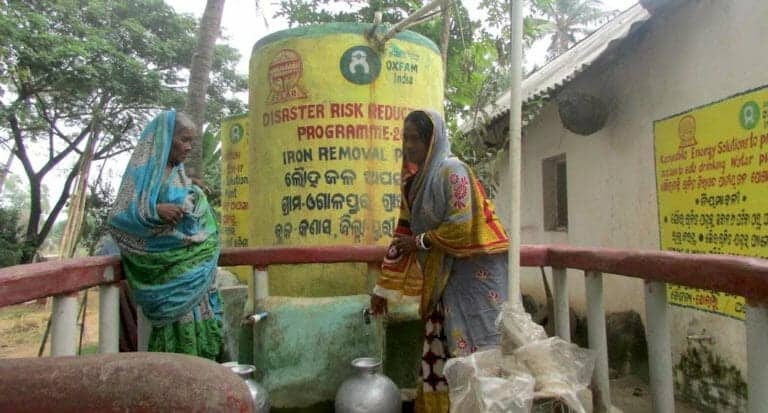Iron removal plants have made tube well water potable, reducing water-borne diseases drastically. (Photo by Rakhi Ghosh)
Soudamini Palai of Ogalpur village in Kanas administrative block of Puri district is happy that her 5-member family now gets sufficient safe water for drinking, with no effort. But, a few years ago things were quite different. It was a strenuous work for the women of the village to provide clean drinking water to their families.
The groundwater of the village that is less than 15 km away from Chilika Lake, a brackish water lagoon, is saline and contains iron. Makhara, a tributary of Daya River flowing near Ogalpur, is polluted. Still, the villagers, especially the women, who are responsible for collecting water, were dependent on these two sources to meet the family’s needs of drinking, cooking and other household purposes.
In Suhagpur village, 35-year-old Kuni Pradhan narrated a similar story. Women and young girls of the village endured the same arduous labor every day to draw water from the village pond, the only source for potable water. Villagers used the pond for washing utensils and clothes, and also for bathing.
Open defecation near the pond added to the biological contamination, especially […]
Full article: Kanas villagers make water safe through simple interventions
Water Warriors and Other People Stories
- From sewage to oasis: Female duo create Johannesburg green corridor
- Six girls from Assam develop biodegradable yoga mat, may save lakes from water hyacinth menace
- A military veteran’s new mission is to restore a stream and help people heal
- ‘Everything is drying up’: As springs on Hopi land decline, a sacred connection is threatened
- ‘Water is sacred’: 10 visual artists reflect on the human right to water
- Government is Scaling Back Water Quality Protections. Surfers are Picking up the Slack.

